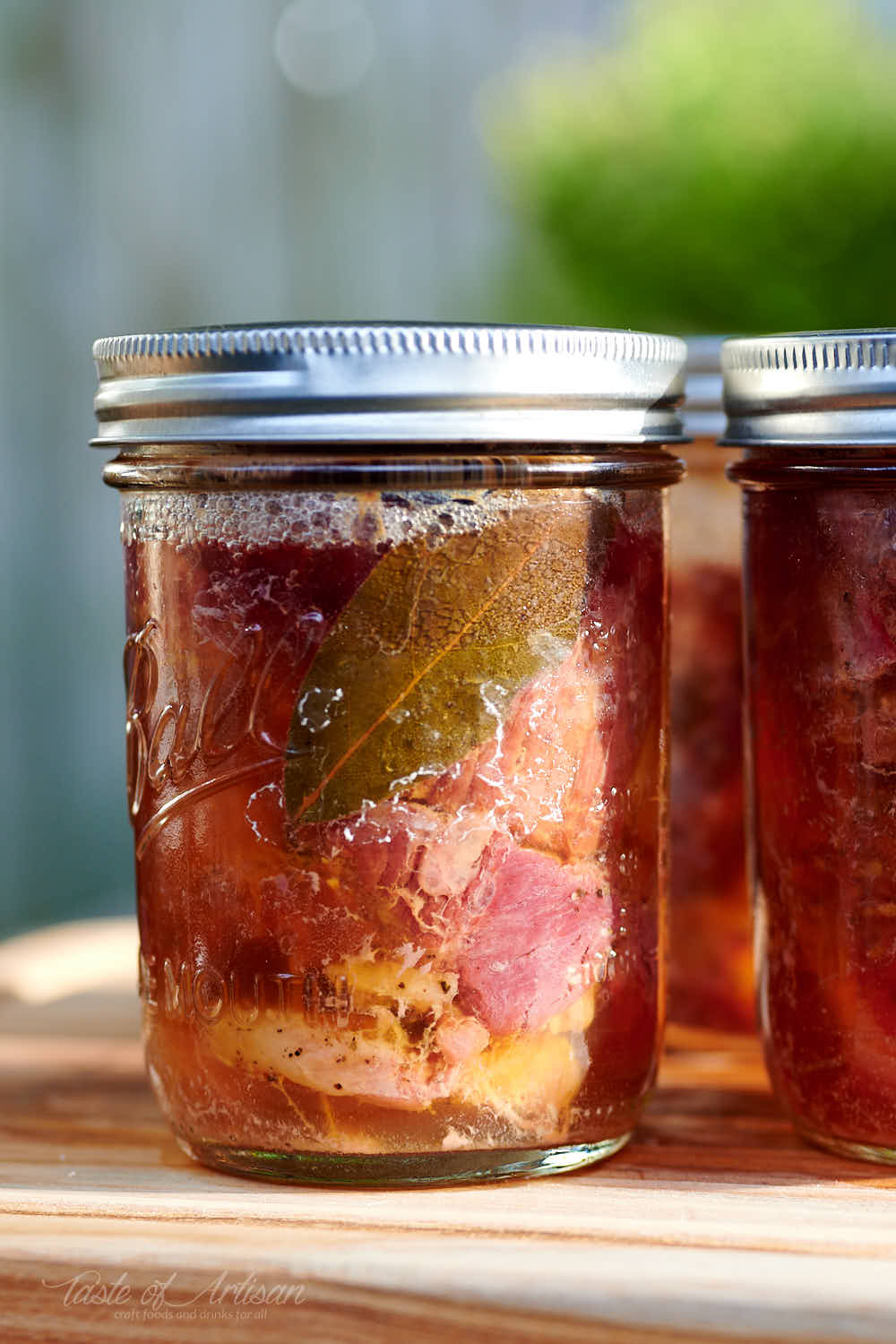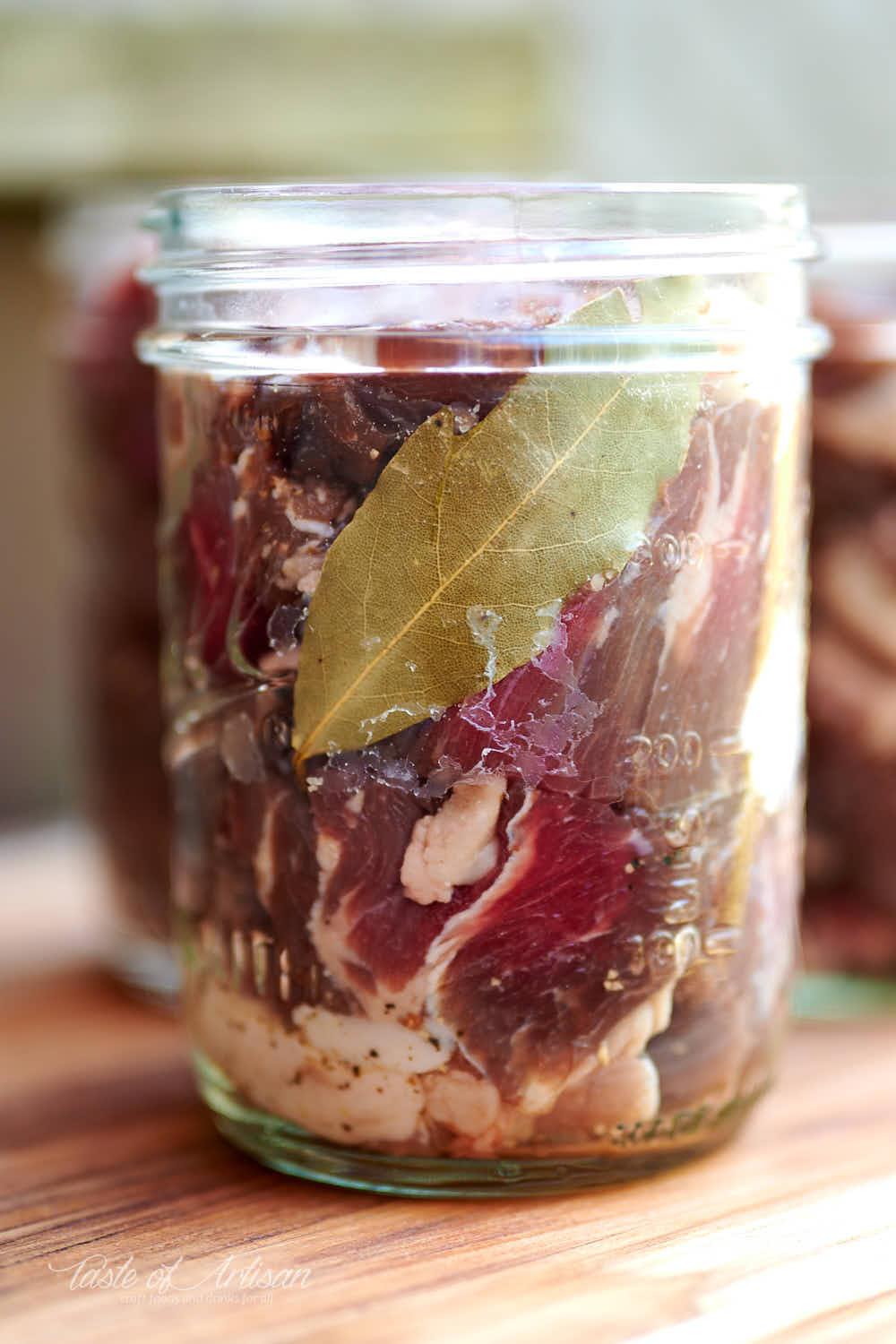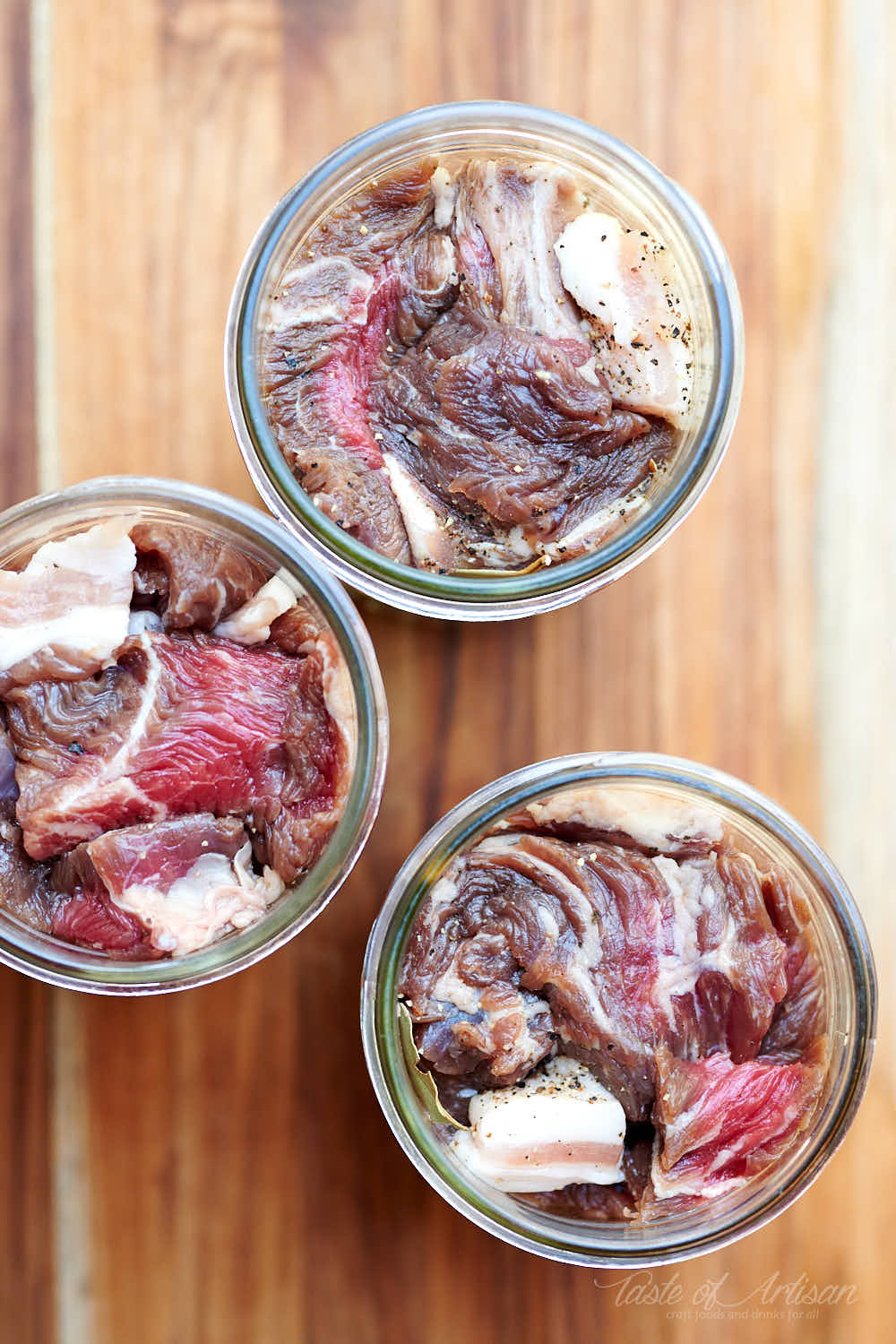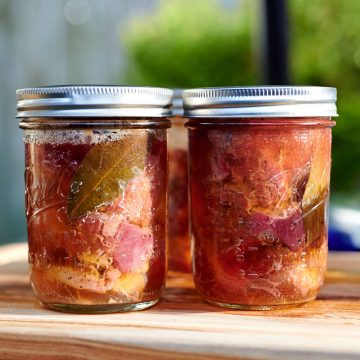Canned beef is a great source of protein when you are in a time crunch. Too busy to cook? Grab a jar of canned beef and make dinner in literally 20 minutes. I love the convenience of canned meat. It's also a great way to preserve food long-term. Canned beef will store for up to 2-3 years or even longer if stored properly. Taste qualities tend to decrease after a year, but the meat will still be safe to eat well past one year.

Canned beef really only needs basic spices and seasonings to taste great, like salt and pepper. I also like adding some bay leaf and powdered onion, garlic and mustard seed for their savory flavor. Feel free to experiment with spices though; beef pairs very well with thyme, sage, and cayenne pepper. If you like the Mediterranean taste, try basil and oregano.

Beef fat doesn't age very well so often when we make cured beef sausage we use pork fat instead. The same is true when making canned beef it's best to trim off beef fat and substitute it for pork fat. Pork belly works really well here and provides additional flavor. You can even quickly sear the pork belly pieces for even more flavor.

The beef and the pork belly in this recipe are cured with salt and Cure #1 for 24-48 hours. This makes the meat more flavorful, and the curing salt adds a wonderful pink color and enhances the flavor. Cure #1 is not required when canning meat but it provides an extra layer of protection against bacteria and enhances the flavor and the color of the meat. It also enhances the keeping properties of canned meat.

Food safety when canning meat
Canning meat is fairly straightforward but you must follow some basic rules to ensure that your canned meat will be safe to eat. Those include using a pressure canner, keeping the meat cold, using clean utensils, processing at the right pressure/temperature and for sufficient time, among other things.
If you are new to meat canning, please read my guide on how to can meat before attempting this recipe.

Ingredients
- 2.0 lbs lean beef chuck is recommended; 900 g
- 0.2 lbs pork belly 100 g;
- 1/2 tsp cure #1 level; 2.5 g
- 1 1/3 tsp kosher salt one level, one heaping; 8 g
- 3/4 tsp mustard powder 1.5 g
- 1/2 tsp black pepper 1 g; ground
- 1/4 tsp onion powder 0.6 g
- 1/4 tsp garlic powder 0.6 g
- 3 bay leaves 1 per jar
Instructions
- Cut the beef and the pork belly into 1-inch pieces. Mix the salt with Cure #1. Place the meat and the pork belly in a bowl, sprinkle with the kosher salt and cure #1 mix, and mix well. Cover and cure in a refrigerator for 24-48 hours.
- Take the meat out of the fridge, sprinkle with the mustard powder, onion powder, garlic powder, and black pepper, and mix well.
- Before proceeding, review the detailed guide on how to can meat.
- Pack the seasoned meat (not very tightly) into 16-oz wide-mouth mason jars, leaving 1/2" headspace, adding one bay leaf per jar.
- Wipe the rims, place the lids on top and screw on the bands finger-tight.
- Process at 250F (15 PSI) in a pressure canner for 70 minutes (see notes 1 and 2).
- Remove the canner from heat and let it depressurize naturally.
- Using a jar lifter, carefully remove the jars and place them on a towel or a cooling rack to cool down to room temperature for about 12 hours.
- Remove the bands. Wipe the jars with a damp towel or paper towels. Test the seals.
- Store in a cool, dark, and dry place for up to 2-3 years. The most optimal storage temperature is about 35F-59F (2C-15C).
Special Equipment
- Pressure canner
- 3 wide-mouth pint (16 oz) jars
- Wide-mouth funnel


Angeles says
Second time making your canned beef. Started with a small batch and it was a huge success. I am tempted to try the canned pork as well but we all are beef eaters mostly. Thank you for this amazing recipe.
Victor @ Taste of Artisan says
You are very welcome. Enjoy!
Artem says
Hello! Did you have a pink color fat on a top layer of canned beef. Mine turn pink after canning process. I followed you instructions on measuring cure1 salt. Maybe you’ve had that before?
Victor @ Taste of Artisan says
Hi, what you described is normal, I've seen it before. I don't have a scientific explanation for it but I think it's the effect of pink salt. I see it sometimes on pork products as well, like this dry cured capicola.
https://tasteofartisan.com/wp-content/uploads/2020/04/Homemade-Capicola-cross-section.jpg. But not all the time.
Kim Young says
When can you sear the pork fat, before or after curing?
Victor @ Taste of Artisan says
Do it after curing.